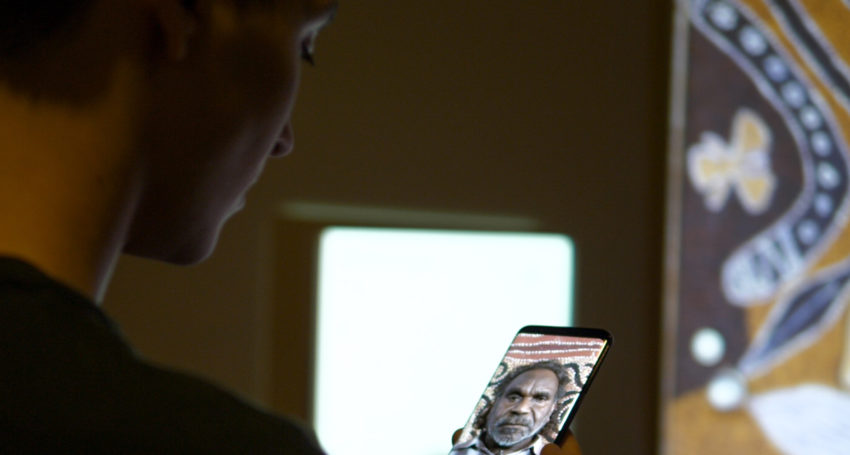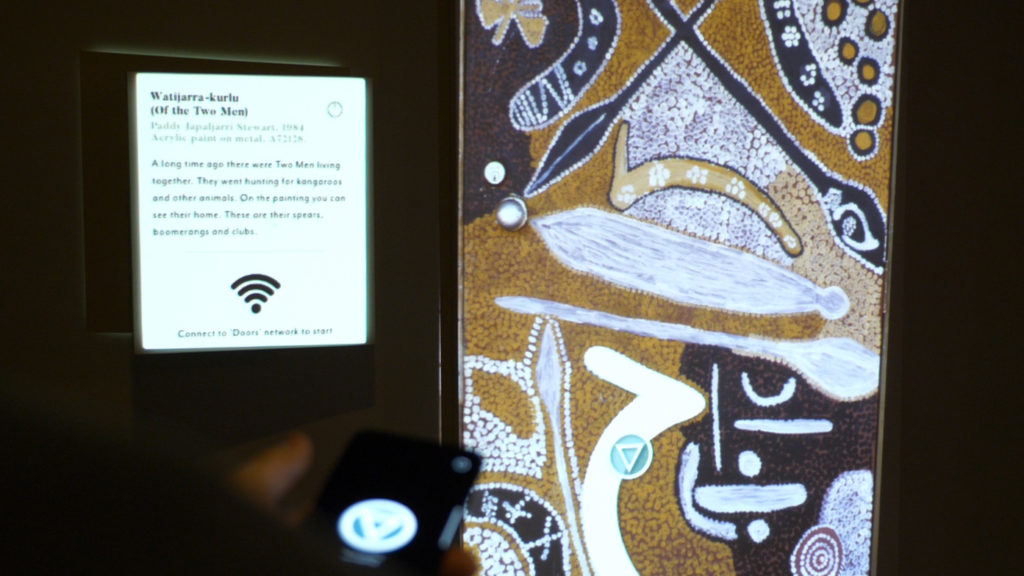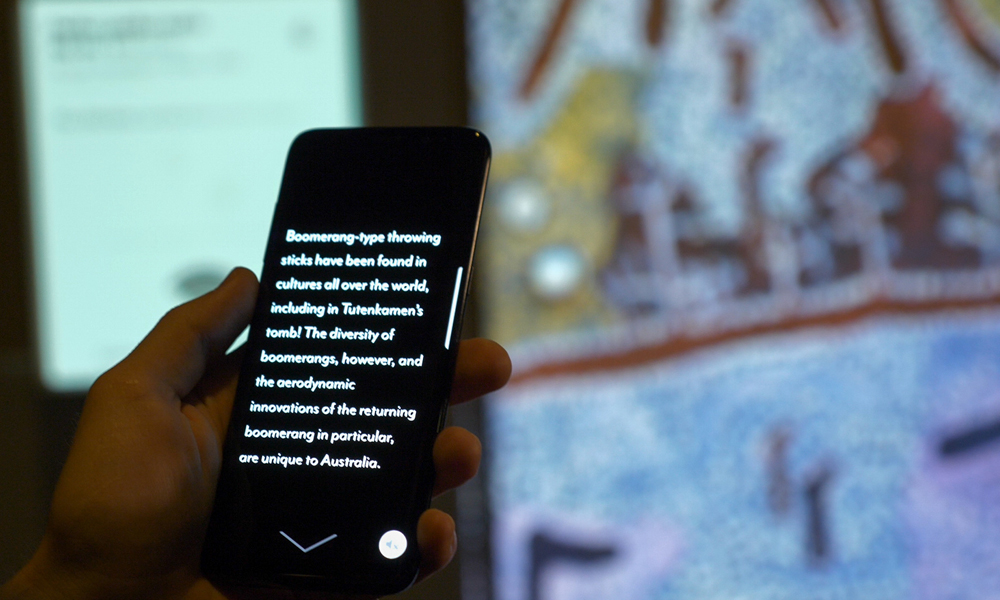Indigenous art moves out of the shadows and onto smartphones
Technology
A new interactive digital platform is bringing ancient indigenous Australian art from one of the world’s biggest collections to life.

Sign up to receive notifications about new stories in this category.
Thank you for subscribing to story notifications.

The South Australian Museum’s 30,000 ethnographic indigenous objects are one of the most comprehensive collections of Australian aboriginal cultural artefacts in the world. Some of these artefacts are thousands of years old, surviving colonisation and the changing Australian environment.
However, limited exhibition space means 95 per cent of the museum’s indigenous collection is hidden from public view in storage.
This is where Cipher – an audience-based audiovisual program designed by South Australian company Sandpit – comes into play by giving museum visitors virtual access to parts of the collection on display via their smartphones.
“Cipher is a new way to explore these artworks and connect to the stories that sit underneath them,” said Sandpit Director Sam Haren.
The first artefacts to be displayed through Cipher from next month is a collection called the Yuendumu School Doors.
The 27 wooden doors, which were already digitized, are adorned with Aboriginal Dreaming designs painted by members from the Northern Territory Yuendumu Aboriginal Australian community, and are landmark artefacts for the South Australian Museum.
Haren and his team of developers created an interface that allows visitors to wave their smartphones over the doors to trigger information, sound and projections about the objects.

“Your phone becomes a bit like a pointer or a cursor where you can point it at the door and you can scroll over it,” said Haren.
“As your cursor interface goes over the door, you might select a symbol and then in the palm of your hand you’ll see what that symbol means.
“Then you can access the story behind that symbol, hear about its creation from some of the people connected to the creation of the artworks and then unlock other content.”
Sandpit have previously worked with a number of leading institutions on visitor platforms including the Australian Centre for the Moving Image (ACMI), University of Adelaide and Arts Centre Melbourne. Haren said their experience with these institutions convinced them that the Cipher platform would be suitable for museums and galleries around the world, particularly where exhibition space is limited.
“We’ve discovered some core problems many museums and galleries try to tackle. The first is that the collections that they hold of objects or artworks are physically a lot bigger than the space that they have to exhibit them,” said Haren.
“We’re also finding that museums and galleries are digitizing their collections, and they’re trying to find new ways they can share those collections with their visitors.”

The relationship between the South Australian Museum and Sandpit started when the company won the IgniteSA Preserve challenge in July last year.
The challenge required local developers, entrepreneurs, students and other creative minds to create a concept that gives the South Australian Museum’s Australian Aboriginal Culture Collection high visibility.
Preserve also ran in tandem with South Australia growing its connection to the US Ignite Smart Gigabit Communities program – an initiative that benefits international communities dedicated to accelerating the development, deployment and sharing of smart networks.
As the winner of the challenge, Haren will lead a presentation about the Cipher prototype at the US Ignite conference in Colorado in April.
South Australian Museum Director Brian Oldman is excited about what this project will do for the space.
“What (this) technology actually allows you to have access to is to those objects that at the moment are not on public display,” said Oldman.
“Technology plays a real part in access. When you’ve got something of cultural significance on a platform such as this that’s a huge step forward.”
Oldman said the Aboriginal Australian community of Yuendumu was happy about the representation of the Doors and was satisfied their unique story was correctly being told.
The Yuendumu Doors were painted in the early 1980s by five senior men from the Warlpiri community. These artists were invited into the Yuendumu school to paint their Dreaming stories onto the doors of classrooms with acrylic paint.
At the time The Yuendumu Doors were a gesture symbolising a new era of two-way education.
“This technology means that we can communicate these stories far more effectively, far more clearly, and also we can use the expert knowledge of the cultural custodians who live in that area,” said Oldman.
A pilot test of the Yuendumu School Doors exhibition will commence at the South Australian Museum in April.
Jump to next article



